Green tea Chinese food is celebrated worldwide for its health benefits and refreshing taste, but it has long been treasured as more than just a beverage in China. Known as “Lǜ Chá” (绿茶) in Chinese, green tea has deep cultural roots and is often incorporated into Chinese cooking for its flavor, aroma, and nutritional benefits. From savory dishes to sweet treats, green tea adds a unique twist to traditional Chinese recipes.
In this article, we’ll explore the fascinating role of green tea in Chinese cuisine, dive into some iconic dishes that feature it, discuss its health benefits, and provide tips on how to cook with green tea. So grab a cup of your favorite brew and journey into green tea-infused Chinese food.
Table of Contents
Green Tea in Chinese Cuisine: An Overview
The tradition of using green tea in Chinese cuisine dates back centuries. While tea is primarily enjoyed as a drink in China, its culinary uses have evolved, with chefs and home cooks incorporating it into various dishes to enhance flavor and bring a subtle depth to traditional recipes.
Green tea Chinese food use in cooking began in the tea-growing regions of China, particularly in areas like Zhejiang, Fujian, and Yunnan, where high-quality green teas like Longjing (Dragon Well) and Bi Luo Chun (Green Snail Spring) are produced. In these regions, people began experimenting with tea leaves to infuse dishes with tea’s fresh, grassy flavors, leading to a variety of green tea-infused dishes that have become beloved in Chinese cuisine.
Green tea Chinese food: Health Benefits of Green Tea in Chinese Cooking
Green tea Chinese food is known for its powerful antioxidants, mainly catechins like EGCG (epigallocatechin gallate), which are associated with numerous health benefits. When incorporated into cooking, these benefits extend beyond the cup, bringing nutritional value to the dishes.
Key Health Benefits of Green Tea
- Rich in Antioxidants: Green tea’s antioxidants help protect cells from damage and reduce inflammation, possibly lowering the risk of chronic diseases.
- Boosts Metabolism: Green tea aids metabolism, making it a popular ingredient for those seeking to support weight management.
- Supports Heart Health: Green tea can reduce harmful cholesterol levels and improve cardiovascular health.
- Improves Brain Function: Green tea, with Green can, enhances brain function and promotes relaxation thanks to its caffeine and L-theanine content.
- Aids Digestion: Green tea has mild digestive properties that can soothe the stomach and support healthy digestion, which makes it a great addition to rich or oily dishes.
Green Tea Varieties Commonly Used in Chinese Cooking
Chinese cuisine uses various types of green tea, each with distinct flavors and aromas. Here are a few popular varieties:
- Longjing (Dragon Well): This premium green tea from Hangzhou is known for its sweet, chestnut-like flavor and smooth, mellow taste. It’s often used in cooking to impart a light, nutty flavor to dishes.
- Bi Luo Chun (Green Snail Spring): Originating from Jiangsu province, Bi Luo Chun has a delicate, fruity aroma and a slightly floral taste, making it ideal for adding fragrance to light dishes.
- Gunpowder Green Tea: This tea is tightly rolled into pellets and has a bold, slightly smoky flavor. It is commonly incorporated into marinades and sauces to enhance flavor and add layers of complexity.
- Jasmine Green Tea: Jasmine-scented green tea has a floral aroma and is often used in desserts to bring a sweet, fragrant note.
Each type of green tea has unique qualities that enhance a dish, so experimenting with different varieties can yield interesting results.
Iconic Green Tea Dishes in Chinese Cuisine
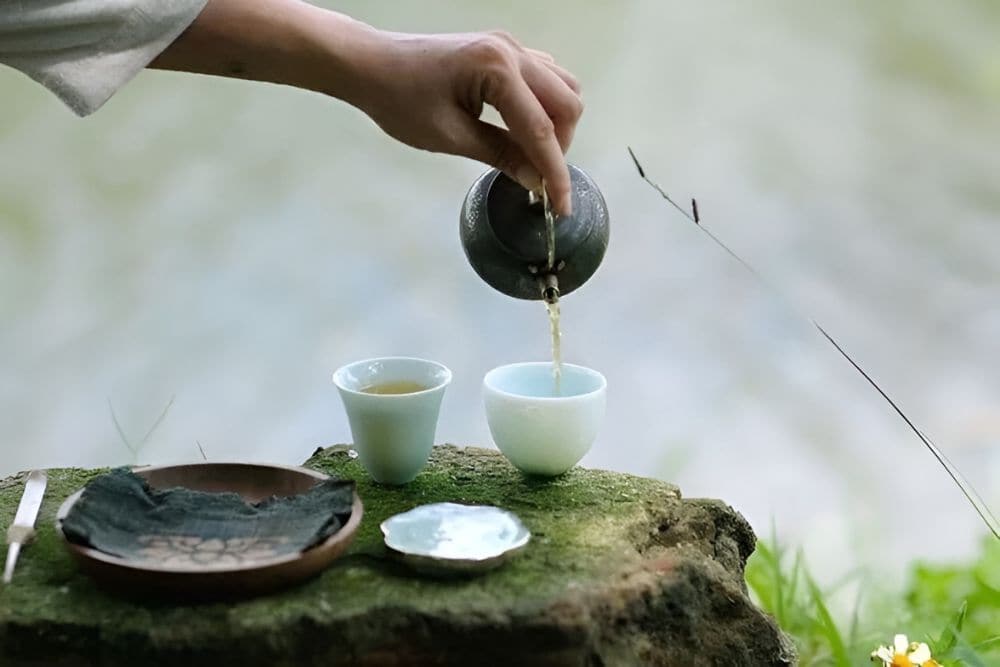
- Longjing Shrimp
One of China’s most famous Green tea Chinese food-infused dishes, Longjing Shrimp, is a delicacy from Hangzhou. This dish cooks fresh river shrimp with Dragon Well tea leaves, creating a light, aromatic flavor. The tea’s nutty sweetness enhances the shrimp’s natural sweetness, while the tea leaves add a vibrant color and subtle crispness.
Recipe Highlights:
- Fresh shrimp are marinated and then lightly stir-fried with steeped Longjing tea leaves.
- The dish is garnished with fresh tea leaves, giving it an elegant presentation.
- Longjing Shrimp pairs well with rice, allowing the delicate flavors to shine.
- Green Tea Chicken Soup
In traditional Chinese cuisine, green tea is sometimes added to chicken soup to give it a fresh, earthy aroma. This soup is famous for its soothing qualities and is often enjoyed during the colder months or as a nourishing dish for recovery.
Recipe Highlights:
- Chicken is simmered with green tea leaves, ginger, and Chinese herbs for a light, fragrant broth.
- The green tea adds an earthy flavor and pairs well with the richness of the chicken.
- Additional ingredients like goji berries or dates can be added for extra nutrients and sweetness.
- Tea-Smoked Duck
Tea-smoked duck is a classic Chinese dish that uses green tea leaves, often mixed with rice and sugar, to create a smoky aroma that infuses the duck with a deep, savory flavor. This smoking method adds complexity to the duck, making it a flavorful and aromatic dish.
Recipe Highlights:
- The duck is marinated and smoked using green tea leaves, rice, and spices.
- The tea leaves impart a delicate, smoky aroma that complements and balances the rich flavor of the duck.
- Tea-smoked duck is often served with hoisin sauce and scallions for added flavor.
- Green Tea Rice (抹茶饭)
Green tea rice is a simple yet flavorful side dish that combines cooked rice with green tea or matcha powder. This dish is often enjoyed as part of a light meal or as a palate cleanser between courses.
Recipe Highlights:
- Cooked rice is mixed with green tea or a sprinkle of matcha powder, giving it a subtle tea flavor.
- Sesame seeds and a dash of soy sauce can be added for extra flavor and texture.
- Green tea rice pairs well with fish and other light dishes, enhancing the meal’s freshness.
- Green Tea Noodles
Green tea noodles, often made with matcha powder, are a colorful and nutritious option in Chinese cuisine. They can be enjoyed hot or cold and have a mild green tea flavor that pairs well with light sauces or broths.
Recipe Highlights:
- Matcha powder is blended into the noodle dough, imparting a vibrant green color to the noodles.
- The noodles can be served in a light broth or tossed with sesame oil and vegetables.
- Green tea noodles are a refreshing option for summer dishes and pair well with seafood or tofu.
- Green Tea, Ice Cream, and Desserts
Green tea Chinese food is a popular ingredient in Chinese desserts, with matcha ice cream, green tea mooncakes, and green tea pastries being widely enjoyed. These desserts bring out the natural sweetness of green tea and are a refreshing way to end a meal.
Recipe Highlights:
- Matcha powder is added to ice cream bases, cakes, or mooncake fillings for a rich, creamy flavor.
- Green tea Chinese food desserts are often paired with red bean paste or black sesame for contrast.
- The slight bitterness of green tea balances the sweetness of these desserts, creating a harmonious flavor profile.
Cooking with Green Tea: Tips and Techniques
Cooking with Green tea Chinese food requires a gentle approach to preserve its delicate flavor and avoid bitterness. Here are some tips for incorporating green tea into your dishes:
- Choose the Right Tea: The green tea you use can significantly impact the flavor. Longjing is excellent for savory dishes, while matcha works well in desserts and baked goods.
- Steep Carefully: Overstepping Green tea Chinese food can make it bitter. When using brewed tea in cooking, steep for 1-2 minutes at 160-180°F (70-80°C) to retain a balanced flavor.
- Use Tea Leaves or Powder: Green tea leaves can be added directly to soups and stir-fries, while matcha powder is better suited for desserts and doughs.
- Balance Flavors: Green tea Chinese food pairs well with light, fresh ingredients. Pair it with seafood or poultry in savory dishes; in desserts, balance it with sweet flavors like honey or fruits.
- Experiment with Marinades: Green tea works wonderfully as a marinade for meats, as its tannins can tenderize while adding subtle flavor. Try marinating chicken or fish in green tea, soy sauce, and ginger.
Advantages of Adding Green Tea to Your Diet
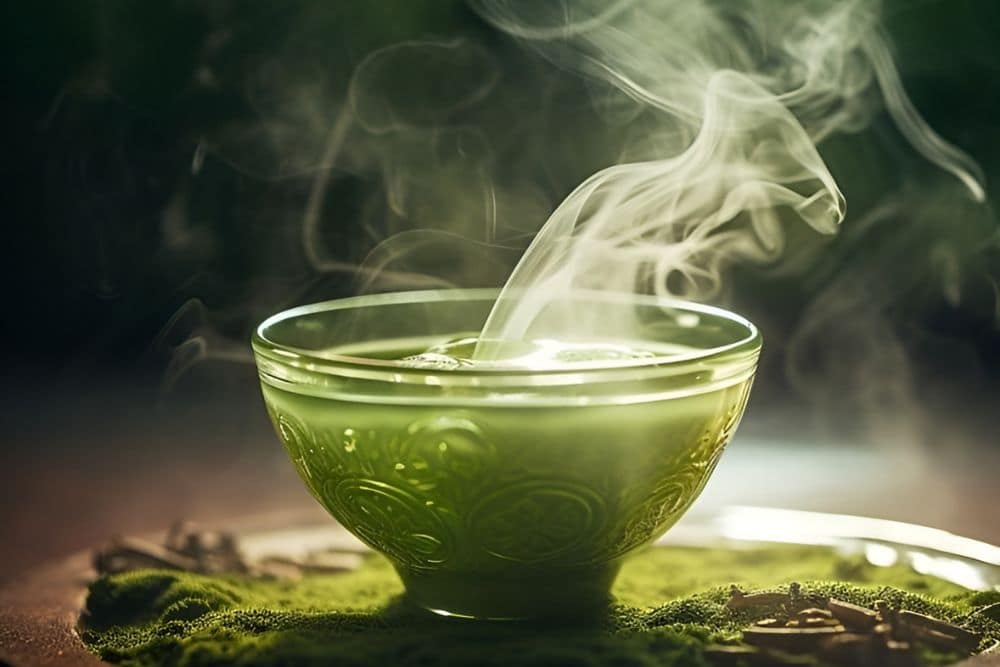
Adding green tea to your diet through cooking is a creative way to enjoy its benefits. Here’s how it can contribute to a healthier diet:
- Low-Calorie Flavoring: Green tea adds flavor without calories, making it ideal for those seeking light and healthy dishes.
- Rich in Antioxidants: By cooking with green tea, you can enjoy its antioxidant properties in more than just your daily cup.
- Boosts Digestion: The mild digestive benefits of green tea can enhance meals, especially when paired with heavier foods.
Conclusion
Green tea Chinese food offers endless possibilities in Chinese cuisine, bringing a fresh, earthy flavor and numerous health benefits. From savory delicacies like Longjing Shrimp to the rich flavors of green tea desserts, the versatility of green tea is evident in the variety of dishes it can enhance. By experimenting with different types of green tea, you can create flavorful and nutritious dishes.
So, next time you’re in the kitchen, why try adding a hint of green tea to your favorite recipes? You might discover a new favorite dish – and a new way to enjoy this ancient, celebrated ingredient. Green tea is a delightful addition to any meal, whether in your cup or on your plate. Enjoy your culinary journey with green tea!





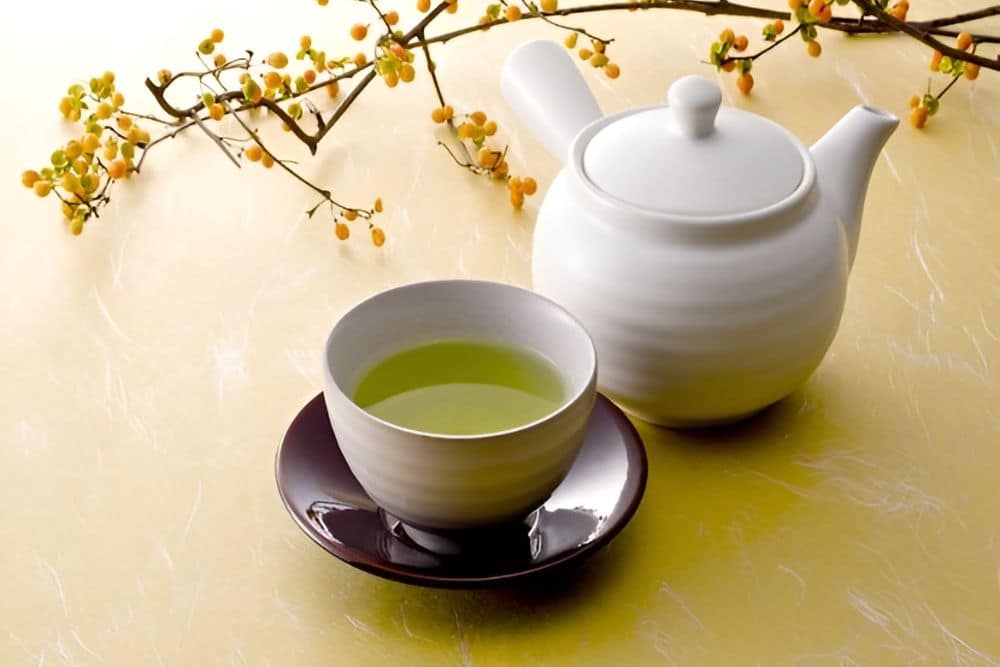



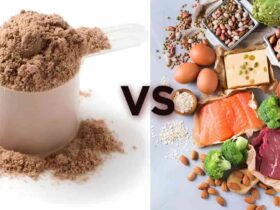



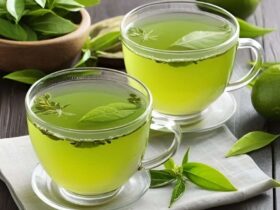

Leave a Reply